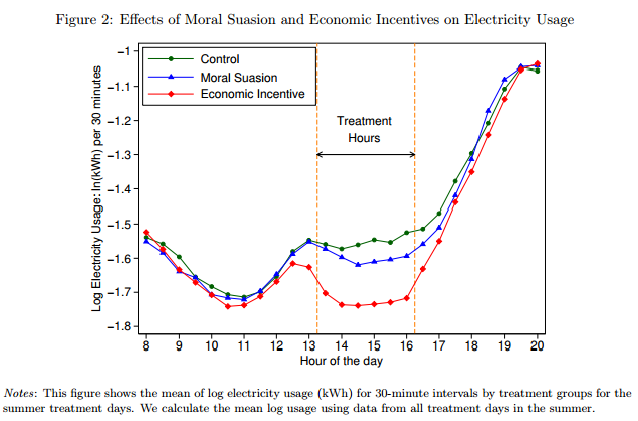Moral Suasion vs. Price Incentives for Conservation
Given the water drought in California, Ito, Ido and Tanaka have a timely paper comparing two methods of electricity conservation. The authors assigned 691 households in Japan to one of three groups a) a moral suasion group, b) an economic incentive group or c) a control group. The moral suasion group were told that electricity conservation was important and necessary on peak demand days and then over a year when the peak times hit they were sent day-ahead and same-day messages to please reduce electricity consumption at the peak times. The economic incentive group were told that their electricity prices would be higher during certain peak periods and over the year when the peak times hit they were sent day-ahead and same-day messages telling then when the prices would be higher. Prices were approximately 2-4 times higher during the peak times. Control groups had smart meters installed but were not sent messages.
Moral suasion worked but not nearly as well as economic incentives (in the figure, lower use is better).

In fact, as the author’s discuss, the figure significantly underestimates the gains from the economic incentive because moral suasion worked only for the first few treatment periods and then faded away. The economic incentive continued to work throughout the treatment period. Moreover, precisely because people continued to respond to the incentive they developed a conservation habit so the group facing economic incentives actually conserved more during non-treatment periods and even after the experiment ended.
Hat tip: John Whitehead at Environmental Economics.
Addendum: Here are previous MR posts on water.